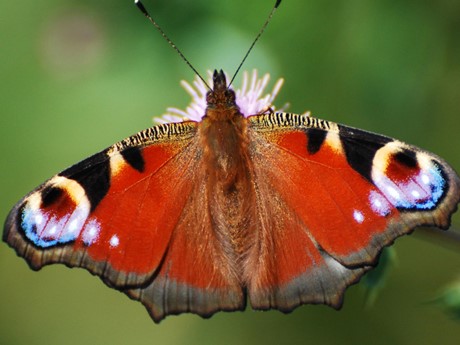Mild autumn muddles UK wildlife
Kate Warriner, 08/12/2022
As autumn makes way for winter, we look back on another strange season in a year defined by disrupted weather. A ‘split spring’, heatwaves, droughts and ‘false autumn’ - have been followed by one of the mildest autumns ever recorded. In November alone, the UK saw highs of 23 degrees, and according to the Met Office it has been the third warmest November on record.
Normally, autumn weather signals to wildlife that winter is coming; time to wind down and conserve energy. But this year, Nature’s Calendar has received reports of unseasonal behaviours and late records for autumn events.
Trees flowering in autumn
By the end of autumn most trees are entering dormancy: - a kind of deep sleep. Buds have developed ready for spring and are encased in hard scales to protect them. Normal growth is suspended, and tree metabolism slows down so there is less need to take up nutrients and water. Trees do this to survive the colder, harsher conditions of winter.
This October, however, we had several reports of trees putting out new growth, including - hawthorn and horse chestnuts in flower, and ash trees growing leaves. Flowering and leaf growth normally occur in spring and summer when a tree is most active. So what has happened? Where humans can easily tell what season it should be, a tree must rely on the conditions of its environment. The trees appear to be confused by the mild weather and are ‘testing the waters’. It remains to be seen what effect this type of behaviour will have on these trees in future.

Hawthorn flowering in October. Photo: Julia Mahon.
Trees tinting late
Tree tinting typically starts in late summer and finishes in late autumn. It happens when cold weather prohibits the production of the compound – chlorophyll, - which colours leaves green. As the weather cools, chlorophyll disappears from the leaves, and they change colour.
We’ve already seen first tints affected by the ‘false autumn’ – early tinting in summer that is believed to be a stress response to the extreme heat and drought. Now we’ve actually reached autumn, leaf tints are still being affected. Many recorders have reported that full tinting has been slow this year, especially in sheltered locations, and we are still receiving lots of tint records. The mild autumn means chlorophyll is staying in the leaves for longer, prolonging the full tint.

Late full tinting Silver Birch and Field Maple. Photos: Mary Elizabeth Rogers.

Autumn animal sightings
Whilst Nature’s Calendar doesn’t record winter dormancy for any of our species, we received some out-of-season records which reflect the mild autumn.
Wasp queens were still being seen by recorders in November. These insects normally go dormant very early in autumn, hiding in sheltered places like crevices in walls, and emerge again in spring to find a new nest.
Butterflies have been taking advantage of warm, sunny days and were seen by recorders until 13th November. Butterflies overwinter in a dormant state in dry and sheltered places but can be seen in winter if the days are mild enough.
Newts were still being seen by recorders on 3rd November. Newts overwinter in a dormant state in places free from frost, like wood piles and pond banks, but they can also surface in mild winter weather.

Red Admiral spotted at the end of October. Photo: James Taylor.
How to help
All of this shows the value of records in tracking and understanding seasonal change. So, please help us keep our finger on nature’s pulse! Check out which species and events we record, and submit your records to Nature’s Calendar.

